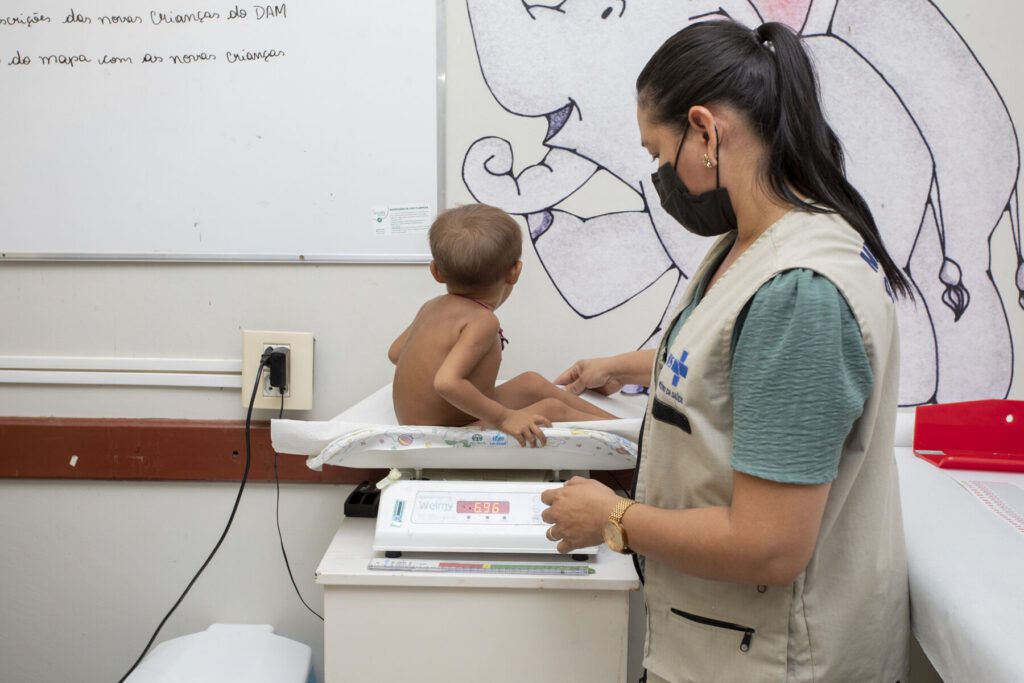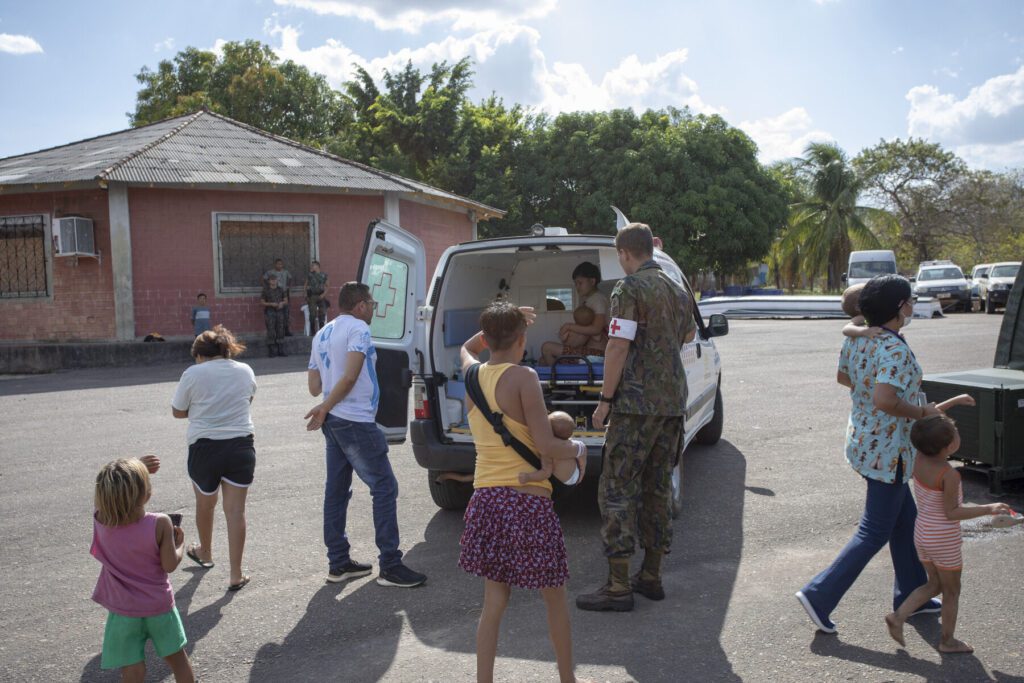Actions by health professionals at the Hospital de Campanha contributed to the recovery of the indigenous population’s health, providing an increase in the number of hospital discharges.
Air Force Agency, by Lieutenant Marize Torres
With a team specialized in clinical medicine, orthopedics, general surgery and pediatrics, as well as nurses, pharmacists and nursing technicians, the Brazilian Air Force Field Hospital (HCAMP) reached the mark of 1,733 indigenous people assisted since its installation in Boa Vista.
The work of the hospital’s health professionals has helped improve the health conditions of the indigenous population it serves. As a result of this progress, there has been a considerable increase in the number of hospital discharges.
Since the beginning of Operation Yanomami, the main demands have been in pediatrics, with more than 601 consultations, followed by clinical medicine (171) and gynecology (148), and 271 laboratory tests.
According to the Commander of HCAMP, Major Doctor Aluizio Paiva Gonçalves, “the great concern of the whole team were the basic health problems, malnourished children, indigenous people in need of basic care, and this was a great challenge, besides the communication with these indigenous people. Partnerships were also made with interpreters to be able to communicate with them, but the big challenge was finding this scenario of public health a little more outdated. From there, we were able to provide support to try to improve the situation of this population,” said the Officer.

After so many adversities, the military officer commented on the positive balance of the Operation so far. “The hospital gave all the support to CASAI, together with the National SUS Force, the Doctors Without Borders, a joint force to really improve the situation of these indigenous people. This was very positive, because we managed, through this task force, to improve the quality of health of these indigenous people, the nutrition of these children, treating them in a humanitarian way.”
Major Aluizio believes that the situation is already stable at the Field Hospital, with a reduction in the number of attendances. “We believe that we have reached a point where the number of patients has been decreasing, especially the more serious ones. We used to see 100 patients a day, and today the number is very low, around two to four daily, and certainly the number of transfers has decreased a lot. Our biggest number of appointments was with pediatrics, basic health care, hygiene, nutrition, and dietary orientation. We attended daily and I believe that today we are stabilized within CASAI.

Integrated care
The HCAMP was set up in the Indigenous Health House (CASAI), an establishment responsible for supporting, welcoming, and assisting indigenous people directed to the Unified Health System (SUS) services. CASAI’s main mission is related to the exercise of indigenous health management, in order to protect, promote, and recover the health of these peoples.
The nutritionist at CASAI, Karla Renata Gavazza, reported on the main challenges faced in nutrition for indigenous health. “Each ethnic group has its own particularities. In addition, the language situation was a big challenge, besides the issue of identifying the age of these children and the state of malnutrition of each one. We started to follow the WHO table for weight and height.
The health professional also expressed the importance of the actions together with HCAMP. “We had a mass evaluation together with the Hospital de Campanha. We did a task force to evaluate the children in relation to weight, height, to classify them and from there we understand how many children we have in severe malnutrition, how many children we have in moderate malnutrition, how many of those we have in comorbidity and without comorbidity. With the help of the Hospital de Campanha, we already see a wonderful advance”.
The malnutrition of the children assisted has been decreasing, and one of the indicators is the increase in the number of discharges. “We had a task force to re-evaluate these children for possible discharges. The most important thing is this joint action. They are discharged, but we always ask HCAMP’s pediatrician to do an evaluation, so that this child can return safely to his or her community. Thus, the discharge is done jointly”, said the nutritionist.

Support on several fronts
The Amazon Joint Operational Command has already transported 16,392 food baskets to the villages of the Yanomami Indigenous Land, helping more than 30 thousand people who live in the region. The Operation has also provided logistical air support to the National Force of the Single Health System (FN-SUS), of the Ministry of Health, by transporting personnel and material to serve six indigenous communities in the Yanomami region.
Photos: Sgt. P. Silva /CECOMSAER
